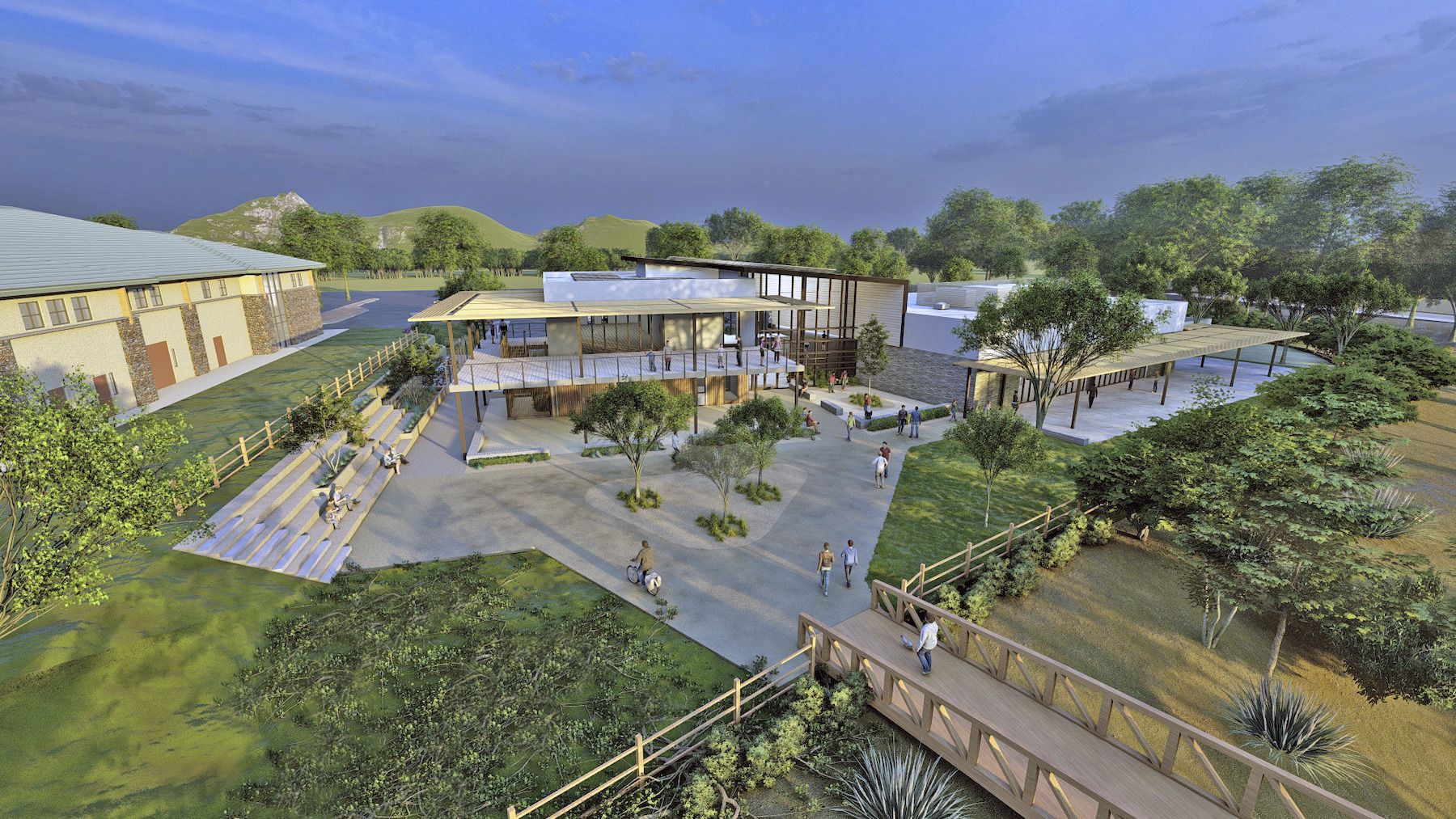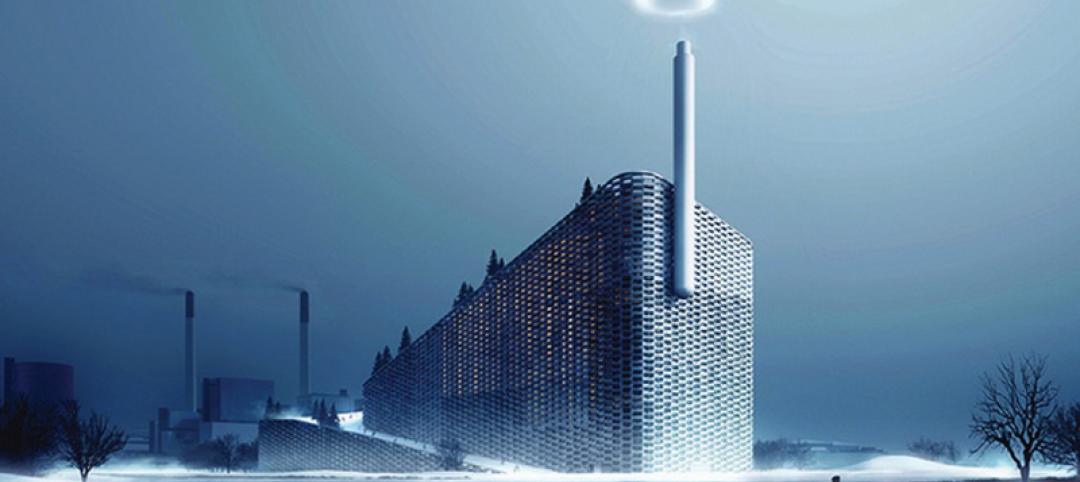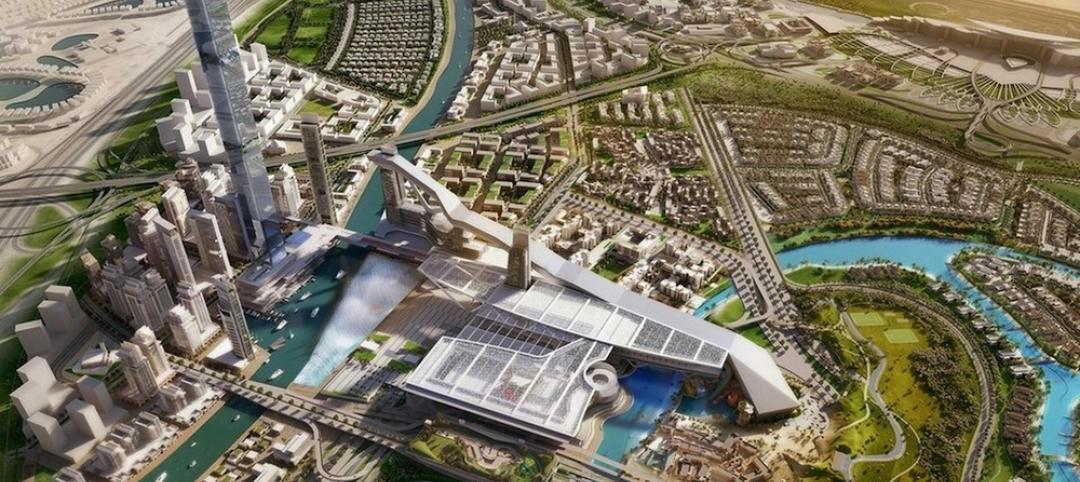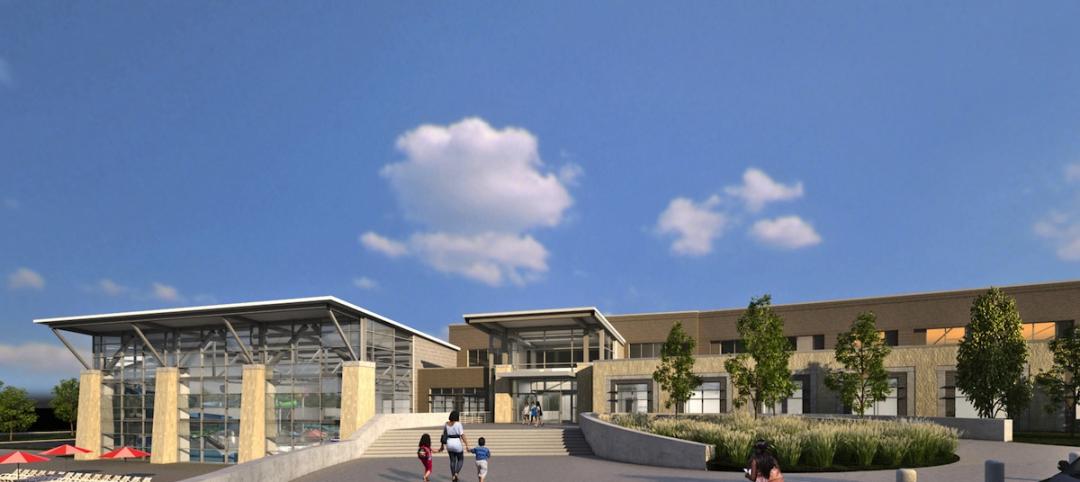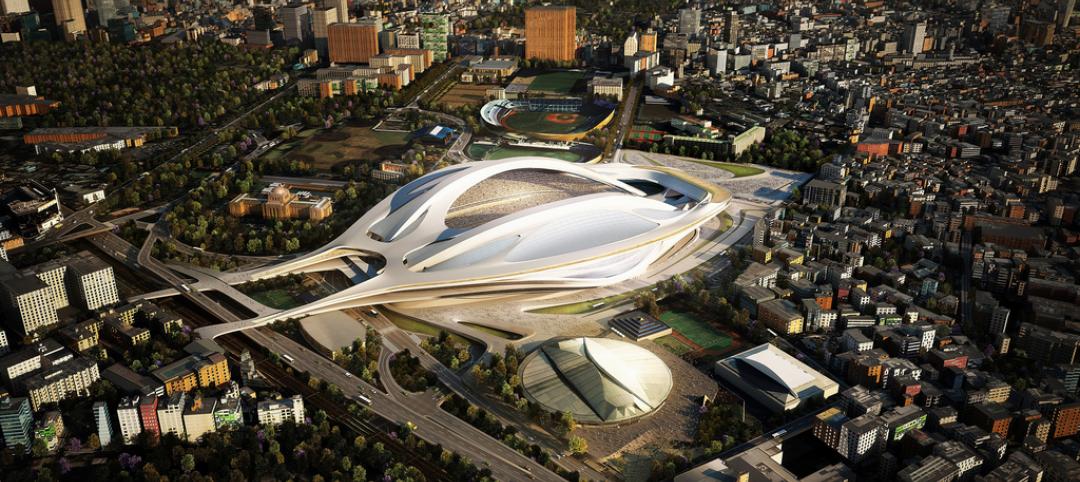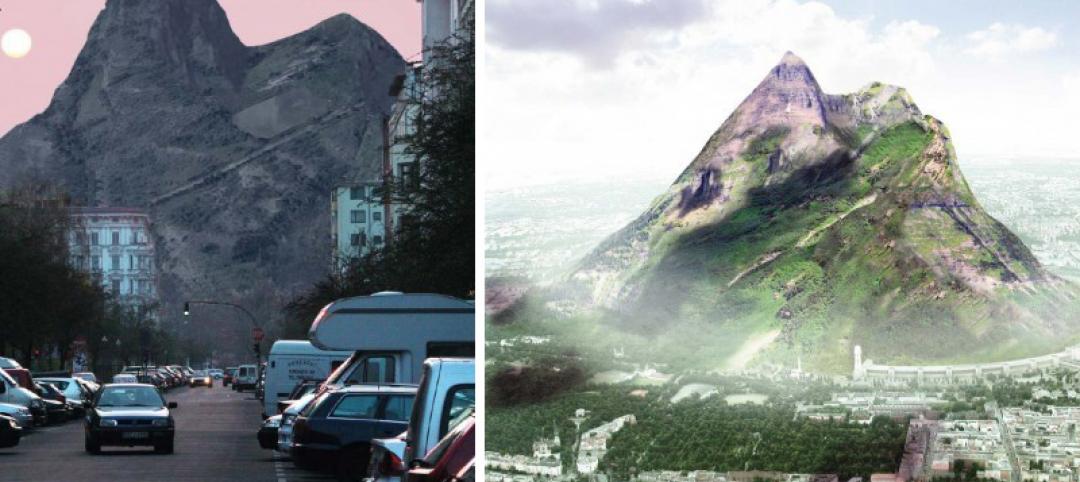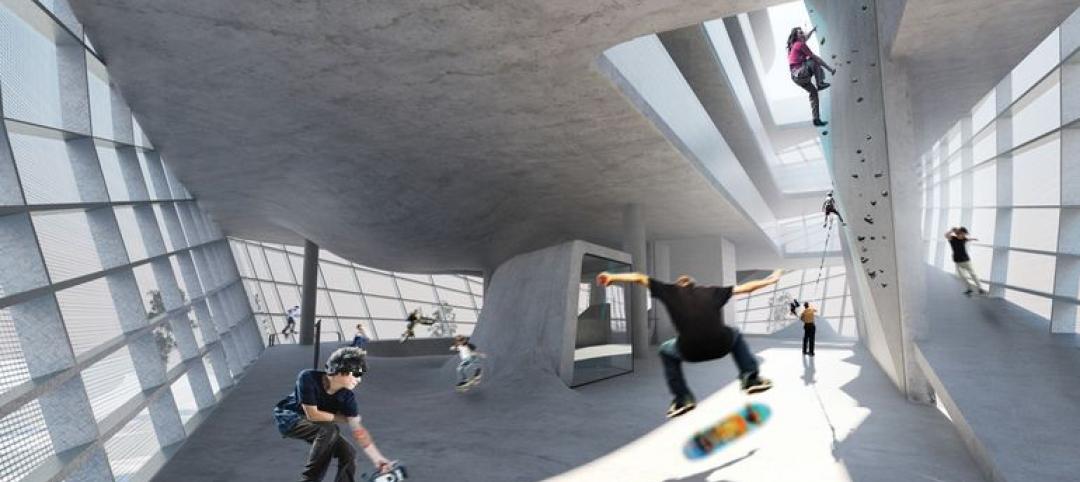The intersection of a community with its natural surroundings is one key to a successful design of community centers, according to a new 24-page paper titled “Creating a Wellness Culture,” about the benefits of this building type, cowritten by HMC Architects’ Civic Practice Leader Kyle Peterson, and Director of Design James Krueger, who used three of their firm’s recent projects to buttress their thesis.
Among the virtues of community centers, the authors assert, are how they empower youth, strengthen neighborhoods, and provide programs for a livable community. They promote socialization, relationships, and mutual support; help to develop a sense of self-reliance, social responsibility, and cohesion within the community; and empower individuals and families toward solving community problems and improving the quality of community life.
“Community centers provide valuable context and environments for their communities because they provide us a sense of place and belonging and often fill the gaps in much-needed human and social services,” the authors state.
Community centers' broad touch
Krueger and Peterson elaborate that these buildings can be seen as integral to a community’s economic and resident wellness by creating a positive atmosphere, “thereby reducing reliance on healthcare and other costly social services.”
The Centers can unite the community in various ways. For example, by offering after-school activities, they can help reduce youth crime rates. (The authors point to a study by the YMCA of USA, which found that teens who do not participate in after-school programs are three times more likely to skip classes, experiment with drugs and alcohol, and be sexually active.)
Community centers increase property value, boost student performance, provide “much needed” event space, public safety, and volunteer opportunities. “This gives people a chance to build their confidence and be part of a team, meet new friends, and learn new skills they can take into other aspects of their lives.”
The authors singled out three of HMC Architects’ Community Center projects as case studies:
• When it’s completed next year, the 40,300-sf Community Recreation Center in Mammoth Lakes, in California’s Sierra Nevada Mountains, will feature an Olympic-sized ice rink, and provide other indoor activities for a town that has few options during inclement weather.
The goal is to create a recreation destination that encompasses a variety of complementary, high-quality, and affordable recreation activities, all in one downtown location. During the summer months, the arena will be transformed into a fully programmable and multi-use 20,000-sf Rec Zone, serving as the base camp for the town’s expanding Parks and Recreation Department summer camps and programs. The Rec Zone includes a portable sports floor that can be placed within the ice rink to allow for basketball, volleyball, futsal, and pickleball. Additionally, the town’s Parks and Recreation department has discussed the possibility of holding concerts and farmer’s markets within the Center.
HMC teamed with Sprung Structures to design a tensile structure that provides a cost-effective 140-foot clear-span building that met the town’s seismic conditions and heavy snow loads. The kit-of-parts Sprung system allowed for quick erection of its prefabricated structural components and skin to ensure that the building is dried-in before winter snows halt construction activities.
The Center is positioned on the southwest corner of Mammoth Creek Park to mitigate noise from the neighborhood.

• The nearby Woodglen Vista Creek, a watershed for the San Diego River waterway system, is playing a prominent role in the design and positioning of the $13.7 million, 12,700-sf Santee Community Center in southern California, which is part of a comprehensive public amenities master plan, and is scheduled for completion in 2025.
The building’s event spaces will overlook the creek and frame views to nature. Sliding glass walls will allow daylight and fresh air to permeate. Outdoor patios and shade structures extend to the south, offering relief from the summer sun. Native landscaping rims the site, naturally transitioning to the banks of the creek.
The building’s two-story entry/lobby space allows access to the event center on the second level with a large outdoor deck that allows for unobstructed views of the creek and sunsets. The Community Center is also designed to reduce its energy usage by 71 percent, compared to other like-buildings.
• Since its completion in 2018, the 19,000-sf Quail Hill Community Center in Irvine, Calif., has become a gateway to the Irvine Open Space Preserve, a designated natural landmark.
One of the largest community centers in the area, Quail Hill serves more than 300,000 residents.
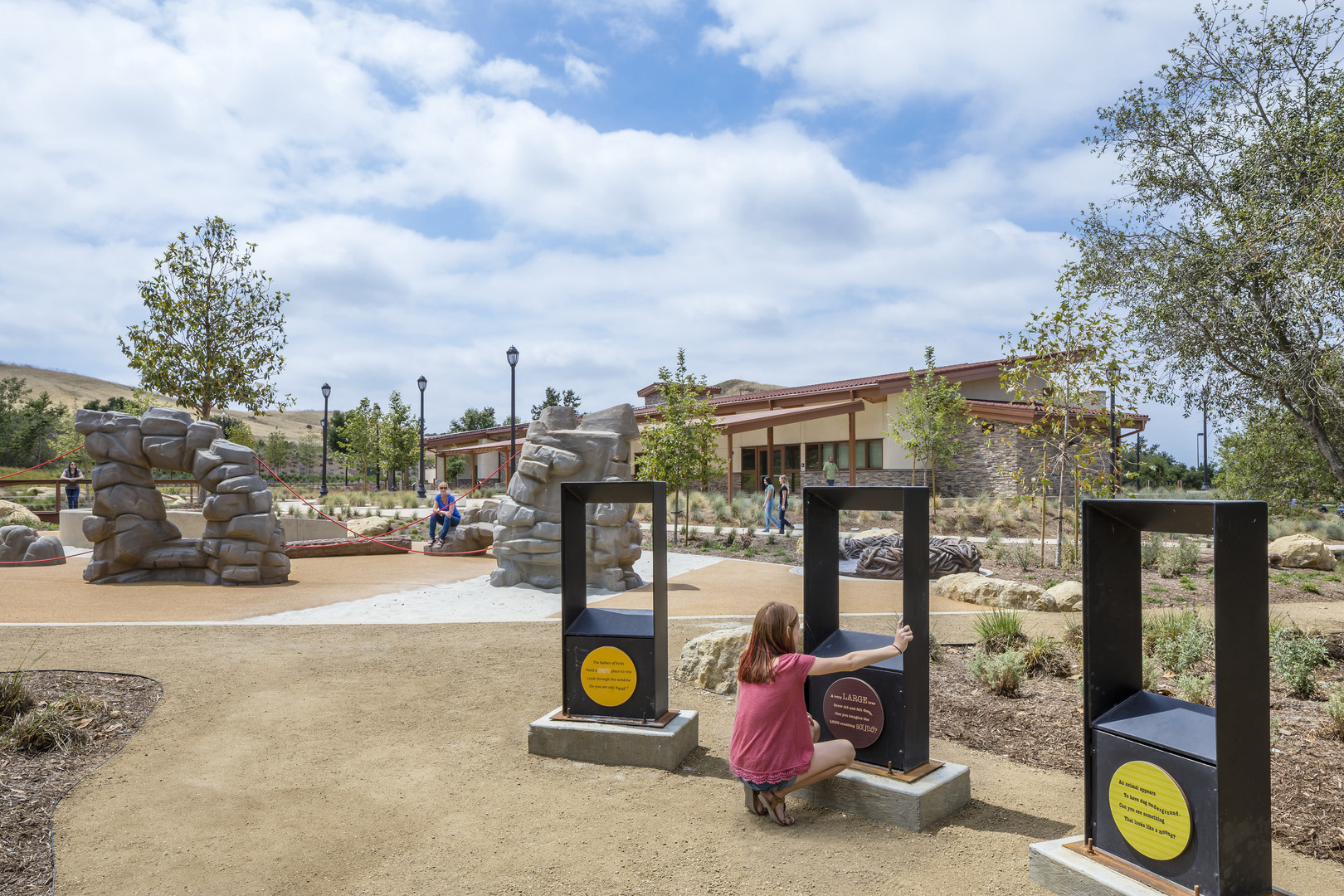
The goal in its design was to create connected indoor and outdoor spaces that offer various activities, programs and classes—all connected to nature. “Many of the lessons offered focus on educating visitors about the local flora and fauna and connecting users to the local trail system that extends through the Quail Hill Loop Trail leading to the coast,” the authors state.
The design team incorporated several strategies to reduce energy and water use, including solar panel arrays, high-efficiency LED lighting, low water use fixtures, and native landscaping. These strategies resulted in a LEED Gold certification through the U.S. Green Building Council.
Inside the building, HMC created four key program zones: an exercise room for wellness activities such as dance and yoga classes; classrooms for early childhood education and other special interest classes; a space for fine arts camps and adult art classes; and a rentable conference center for large training events, weddings, and other group activities.
Related Stories
Industrial Facilities | Aug 18, 2015
BIG crowdfunds steam ring prototype for Amager Bakke power plant project
The unusual power plant/ski slope project in Copenhagen will feature a smokestack that will release a ring-shaped puff for every ton of CO2 emitted.
Sports and Recreational Facilities | Aug 5, 2015
The world’s longest ski slope will be built in one of the world’s hottest cities
The words “skiing” and “desert” aren’t often used in the same sentence. But that’s changing in Dubai, which appears to be on a mission to have the “biggest” of everything.
Sports and Recreational Facilities | Jul 31, 2015
Zaha Hadid responds to Tokyo Olympic Stadium controversy
“Our warning was not heeded that selecting contractors too early in a heated construction market and without sufficient competition would lead to an overly high estimate of the cost of construction,” said Zaha Hadid in a statement.
Sports and Recreational Facilities | Jul 29, 2015
Milwaukee Bucks arena deal approved by Wisconsin state assembly
Created by Milwaukee firm Eppstein Uhen Architects and global firm Populous, the venue will be built in downtown Milwaukee. Its design draws inspiration from both Lake Michigan, which borders Milwaukee, and from aspects of basketball, like high-arcing free throws.
University Buildings | Jul 28, 2015
OMA designs terraced sports center for UK's Brighton College
Designs for what will be the biggest construction project in the school’s 170-year history feature a rectangular building at the edge of the school’s playing field. A running track is planned for the building’s roof, while sports facilities will be kept underneath.
Sports and Recreational Facilities | Jul 23, 2015
McKinney, Texas, dives into huge pool-and-fitness center project
Money magazine is the latest publication to rank McKinney, Texas, as the best place to live in the U.S. The city is trying to capitalize its newfound status to attract more residents and businesses, with amenities like this new recreation center.
Sports and Recreational Facilities | Jul 23, 2015
Japan announces new plan for Olympic Stadium
The country moves on from Zaha Hadid Architects, creators of the original stadium design scrapped last week.
Sports and Recreational Facilities | Jul 17, 2015
Japan scraps Zaha Hadid's Tokyo Olympic Stadium project
The rising price tag was one of the downfalls of the 70-meter-tall, 290,000-sm stadium. In 2014, the cost of the project was 163 billion yen, but that rose to 252 billion yen this year.
Cultural Facilities | Jul 13, 2015
German architect proposes construction of mountain near Berlin
The architect wants to create the world’s largest man-made mountain, at 3,280 feet.
Sports and Recreational Facilities | May 14, 2015
Guy Holloway proposes multi-level urban sports park for skaters
The facility will include a rock climbing wall and boxing space.


